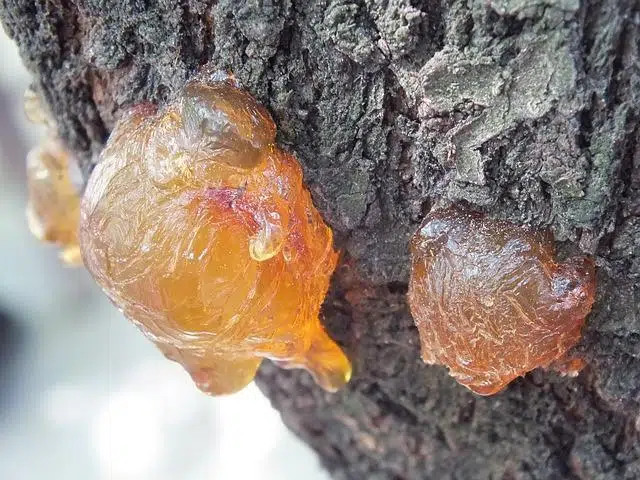
A resin is a substance that is produced from a secretion of a plant.
Resin , from the Latin resin , is a pasty or solid substance that is obtained naturally from an organic secretion of certain plants . Thanks to their chemical properties, resins are used to make perfumes, adhesives , varnishes and food additives, among other products.
The notion of resin is also used to name the synthetic substance manufactured by man that has properties similar to natural plant resins. This means that the concept can be divided into natural resins and synthetic resins .
Natural and synthetic resins
Within natural resins we can talk about balms (a secretion that is used as a purifier or deodorizer), gum resins (emulsifies when mixed with water ) and lactorresins (from coagulated latex), among other types.
Acrylic , for its part, is among the most popular synthetic resins. It is used in a large number of industries, such as automotive, construction or optics . Acrylic is the most transparent of plastics, has high resistance to weathering and impacts and acts as an acoustic and thermal insulator.
Epoxy resin is used to harden other products . Paints and varnishes can include this resin to gain consistency. In electronics , epoxy resin protects circuits and transformers to prevent damage from dust or moisture.
Polyester (used as a matrix for the manufacture of pipes or in the production of fibers) and polyurethane (which is produced as a foam or solid to be used as a sealant, insulator or filler) are other artificial resins.

Natural resins are obtained from certain trees.
The case of pine and its medicinal uses
Pine trees are found in various parts of the world, and are especially common in Canada, the United States, and China. Although there are many varieties of the pine tree, all of them release resin when they suffer some type of damage , and this has a large number of applications, among which are its capacity as a glue, varnish or sealant.
It is distilled into rosin , which is used to improve grip between objects, and as turpentine oil , which is used to dissolve and dilute paint, but pine resin also has interesting uses in medicine. For example, Native Americans have long used it in the treatment of rheumatism , since it helps reduce inflammation in the joints, allowing circulation to be restored and pain to ease. One of the ways in which some indigenous people took advantage of these benefits is by chewing the gummy resin.
On the other hand, pine resin has also been traditionally included in external treatments against burns and sores. In 2002, the results of a long-term study by Russian scientists were published, which showed that the use of this resin in Biopin ointment as the main active ingredient helps inhibit antibodies found in the fluids of the body, which promotes healing and prevents infection by stimulating cellular immunity. It should be noted that this cream does not cause allergic reactions or skin irritation.
Pine resin has also been used as a laxative, diuretic and stimulant, and in China it is used to treat abscesses, although in the latter case the sap of any pine is not useful. The fir tree was widely used by colonial Americans to cure colds and coughs, and even to combat cancer ; As if this were not enough, doctors used to recommend mixing its resin with water to treat smallpox, syphilis and ulcers.
It is important to highlight that the uses of pine resin just described have not been recognized by science as official methods to combat the aforementioned disorders, although this does not mean that its effectiveness is not based on scientific knowledge.
